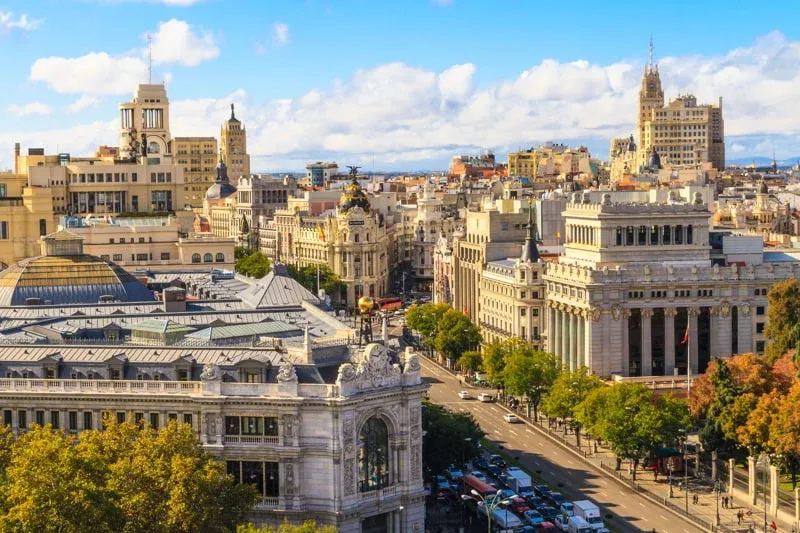“I have been stabbed, shot, poisoned, frozen, hung, electrocuted, and burned… and every morning I wake up without a scratch on me, not a dent in the fender… I am an immortal.” —Phil Connors, Groundhog Day
Yes, dear reader—in case you almost missed it—today is Groundhog Day. The notification from my calendar this morning came as an unwelcomed joke. Too many times this past year, I’ve felt trapped in a modern-day version of that 1993 movie…
Haven’t we all, at some point, tried desperately—just like Phil Connors—to make changes to our repetitive lockdown days? In Ireland, we returned to the highest level of restrictions just after Christmas and will stay this way until early March. We can go out for essential shopping or to exercise—as long as we keep within five kilometers of home. But there’s little chance of shaking things up day to day.
If you’re in a part of the world that’s not under strict government restrictions, I’m envious. For the rest of us, though, it’s just a matter of time. With vaccination programs underway, we can hope for a safer world and more freedom by fall and winter.
As you think about getting back out there, and making progress with your plans to move overseas… or buy an investment property or second home… it’s a good time to take stock and look at what’s happening on the international property scene…
Will Prices Drop In Europe In 2021?
In the early days of the pandemic, we predicted that property values in Europe would take a hit. Here in Ireland, economists predicted a fall in value of 12% to 18% by the end of 2020.
But things turned out differently…
With construction disrupted for months last spring, and property viewings off the table, all this did was create pent-up demand. Once doors opened again, agencies across Europe reported a busy summer run. In the end, Irish property values rose by 6% last year.
Standard & Poor’s predict some slowdown across European markets in 2021 as pandemic unemployment payments wind down. At the same time, Europeans saved an average 25% of their disposable income over the last year. As interest rates remain low, young buyers are in a strong position. In markets where there’s an undersupply of new housing, property is more likely to hold onto its pre-pandemic values and see at least some growth.
In Spain—a market we’re keeping close watch on—the outlook is not so bright. Values in Madrid and Barcelona are forecast to drop as much as 7% to 9% this year and not recover until 2023. Nationally, the decline may be as high as 13%. If you’re dreaming of a pied-à-terre in one of Europe’s top cultural capitals… or a villa on the Mediterranean coast… this year may be the time to act. Note that, the most popular hot spots—like the Costa Blanca and the Balearic Islands—are unlikely to dip.
New Opportunity In Latin America
Like Europe, Latin America also suffered setbacks in construction last year. But our top countries of interest here—Panama, Belize, Mexico, Brazil, and Colombia—are all bouncing back… some with even more attractive offers on the table.
As we recently reported, a number of Panama’s biggest property developers are now offering rent-to-buy schemes. As a foreign buyer, this gives you the chance to test the water and see if you want to make Panama part of your long-term plan. In developments where this opportunity exists, a proportion of your rent in the early years counts toward the purchase if you later decide to buy.
What Latin America has over Europe, of course, is greater affordability. That doesn’t just apply to the bottom line of your property purchase but to your overall cost of living, too. Brazil and Colombia are two markets where your dollar goes especially far right now. Both countries have attractive options for investment and lifestyle property. In Colombia, the peso lost significant value through 2020—making it even more affordable for North American buyers. Though the peso is climbing again, it’s still possible to enter this market for well under US$100,000. Bogotá and Cartagena are the top two cities for international visitors. In Bogotá, right now, we know of one development in an attractive part of town where you can buy a brand-new, fully furnished apartment for US$47,500.
New Trends For 2021 And Beyond
While values may drop in some of the world’s most visited cities this year, we know that, in the long term, tourists will flock back again to Paris, Lisbon, and Barcelona… to Cancún, Buenos Aires, and Rio de Janeiro. What will change is these travelers’ accommodation needs. Instead of staying in hotel chains, more travelers are expected to look for short-term rentals.
Others, of course, will skip the big cities altogether—especially in the near term. Forbes reports that 90% of all travel-related searches in 2020 were for rural escapes. Places like the uncrowded, unspoiled beaches in northeast Brazil… the rivers and jungles of Belize’s interior… and the raw nature of Panama’s Pacific coast will have even more appeal among this set.
And, let’s not forget our newfound friend… the tiny home. Airbnb reports that the number of travelers seeking a tiny-home getaway on its platform grew by 112% over the past year. As the minimalist trend gains traction in the United States, it’s also becoming a real opportunity in a handful of our favorite Latin American markets. So much so that, this year, we’re planning to hold a LIOS virtual event focused solely on the tiny home. I’ll let you know the details once a date is confirmed.
Lynn Mulvihill
Editor, Overseas Property Alert

